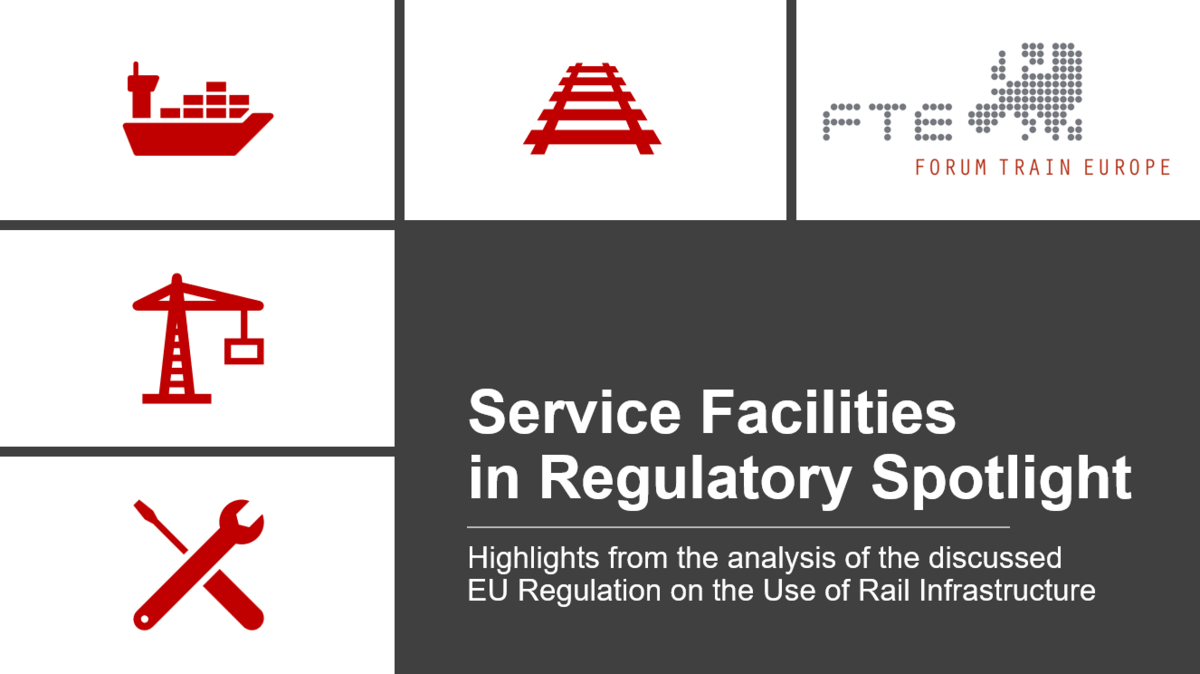Only a rail path is not enough to execute a carriage by rail. With each train movement, there is always an associated need for one or multiple types of rail connected service facilities. This can include a slot at a station, a spot to store the train, access to a freight terminal for (un)loading or, service at a maintenance facility, and more.
Without aligned access to such service facilities, a train cannot operate at all or with competitive costs. The FTE members repeatedly underlined the need to automate and harmonise processes for rail capacity and service facilities. Currently, the topic has risen in importance since new rules are proposed in the EU Regulation on the Use of Infrastructure Capacity, same as the European Commission announced last week the establishment of a dedicated SERAF Sub-group to discuss with the sector on the topic.
Capacity Regulation
The proposed EU Capacity Regulation introduces new requirements for the cooperation and integration of Service Facilities (SFs) and Infrastructure Managers (IMs) in the allocation and management of rail capacity. While the intention is to streamline processes and improve efficiency across the European rail network, a closer technical analysis of the FTE SF Task Force reveals few potential challenges and ambiguities that might hinder practical implementation, namely when it comes to the applicable scope, requirements for digitalisation and responsibilities.
In spring 2025, the FTE Task Force met with the dedicated Working Groups of IRG-Rail (association of rail regulatory bodies), and supported their opinion on Article 29 (see here pages 21-24)
The FTE Task Force experts would like to highlight:
Choosing the right scope:
SFs are very diverging, and it is not a simple question to select those which shall provide indicative information, and which shall cooperate on the train path offer. If the scope is too high, it will create unnecessary bureaucratic burden and rigidity, which may even result in the closure of some SFs. On the other hand, if the scope is too limited, the intended improvement in harmonisation and rail competitiveness is not achieved.
Thus, instead of defining the scope in the Regulation itself (all, TEN-T only, etc.), it can be maintained by, for instance, ENRRB or regulatory bodies. In line with the principle of subsidiarity, the sector will keep the flexibility to set up and test best practices. The FTE community is ready to enter the discussion.
Digitalisation, yes, but reasonable
The digitalisation of the processes is necessary in the 21st Century. The proposed provisions in the regulation are considered a positive and necessary step. While the consensus remains in the obligation to provide service facility descriptions in a digitally readable format, a different view is in the point that SFs “shall make available information about the available capacity in a digital format“ . The smaller SF may lack the IT infrastructure and resources to integrate seamlessly. Such an obligation might cause so high administrative and cost burden that they might rather close down or unnecessarily increase prices for the usage. Therefore, the solution proposed by IRG-Rail (SF using common digital platforms for the handling of capacity requests and allocation) seems a more rational compromise.
Who changes shall be responsible
In case of changes to allocated capacity rights initiated by the IMs or SF, they shall be responsible for coordinating the provision of aligned alternatives with the RU involvement. At this moment, this burden is fully borne by the RUs.
FTE Activities
With the Capacity Regulation, the Service Facilities are given a unique opportunity to have a voice in the European railway matters. Not only freight terminals, as in the past, but all SF types would have the opportunity as operational stakeholders to contribute and raise their voice. The FTE is currently working on the proposal for the “European Railway Platform”, where they would be welcome to join.
Moreover, since 2023, FTE has been running a research project to propose a process and IT standards for the whole Europe. This includes input gathering and cooperation with RUs, Service Facilities, IMs and Regulatory Bodies. You may find more information about the project on the dedicated page.
